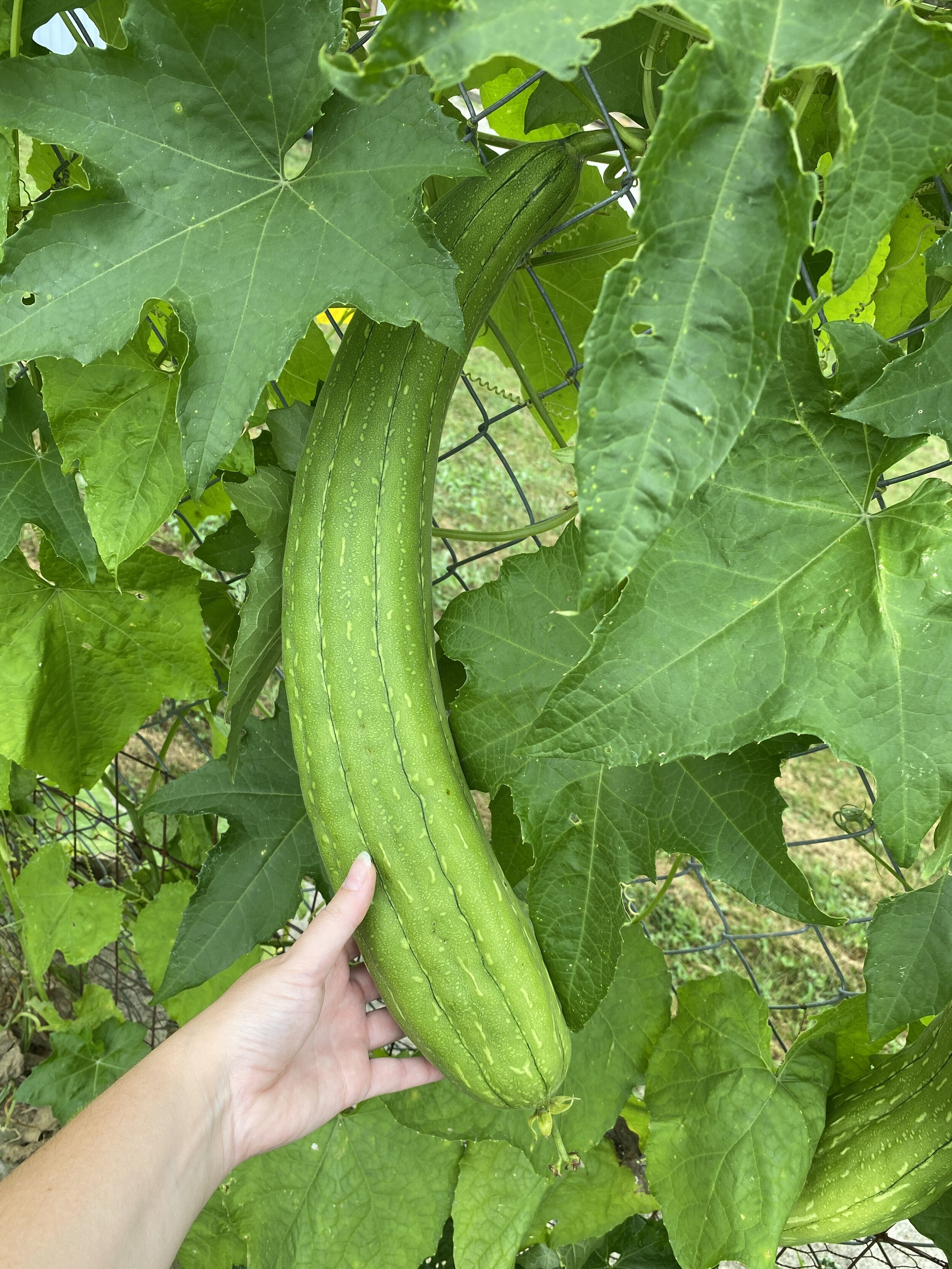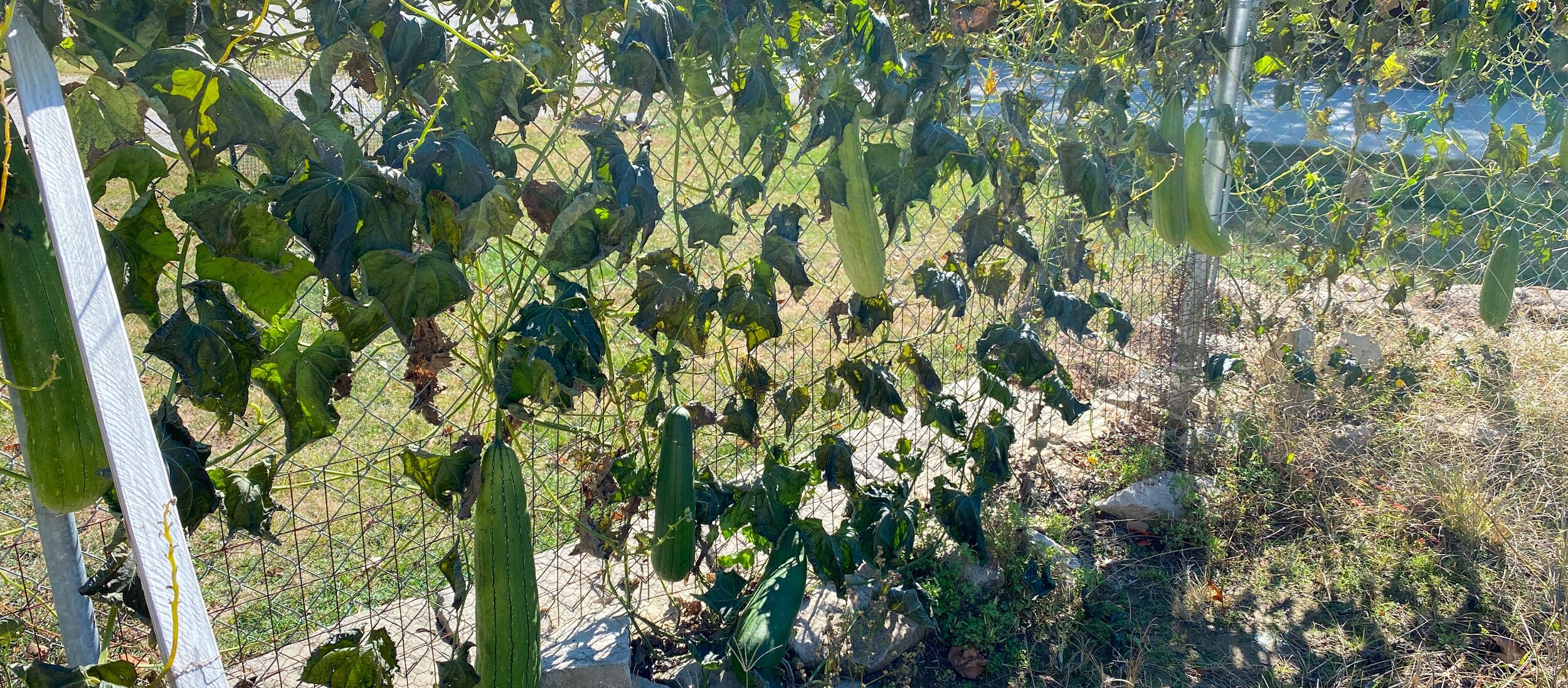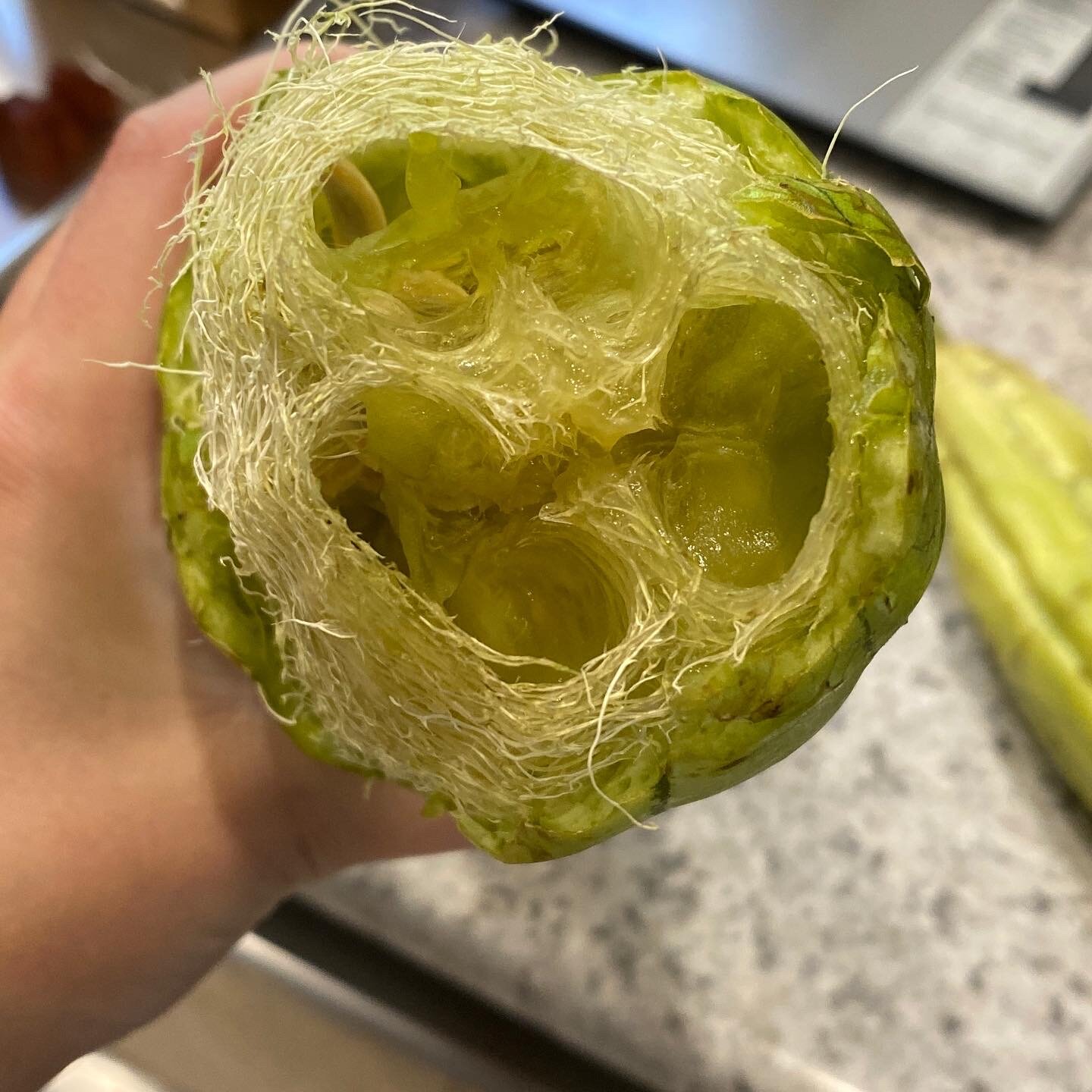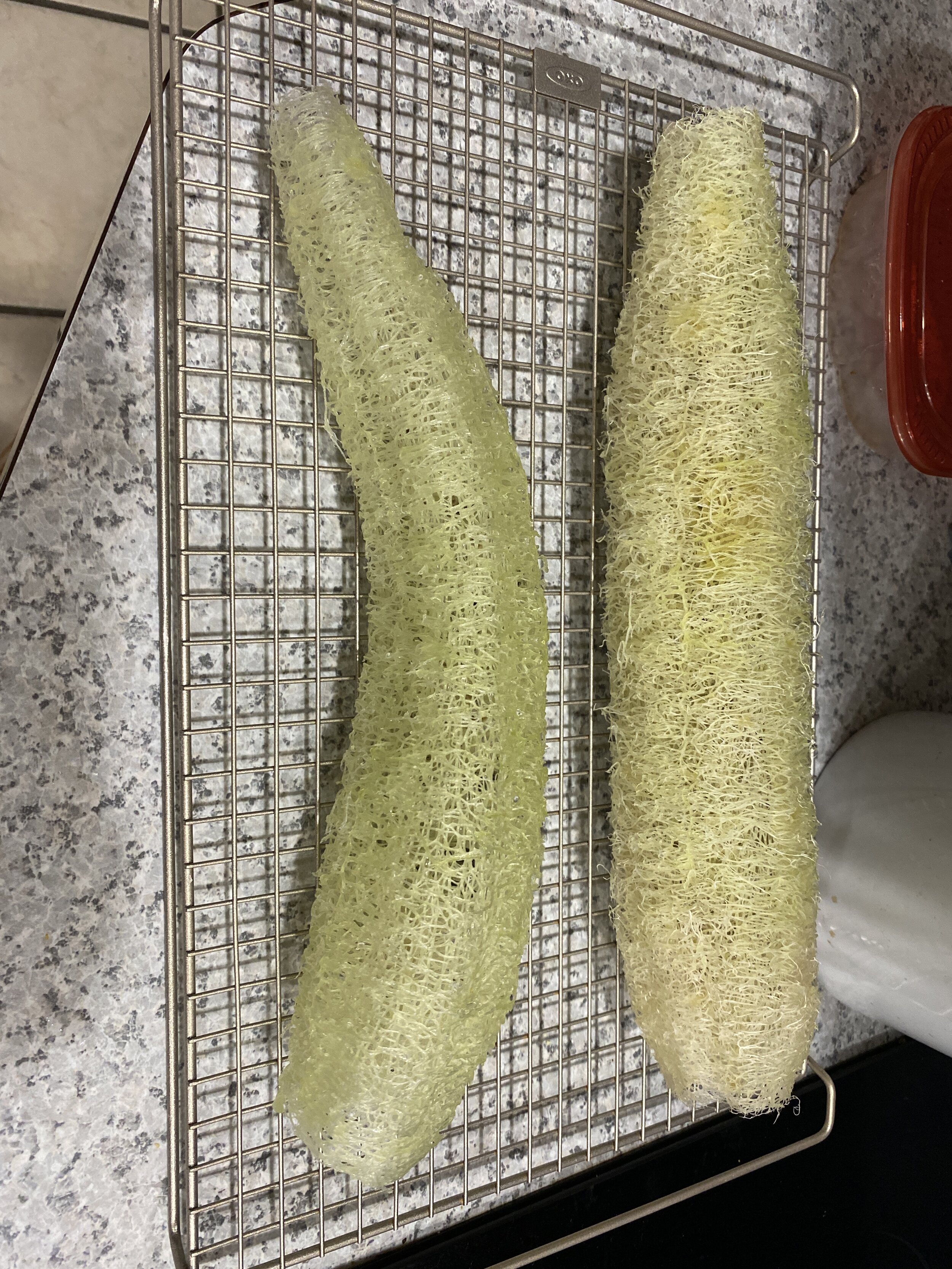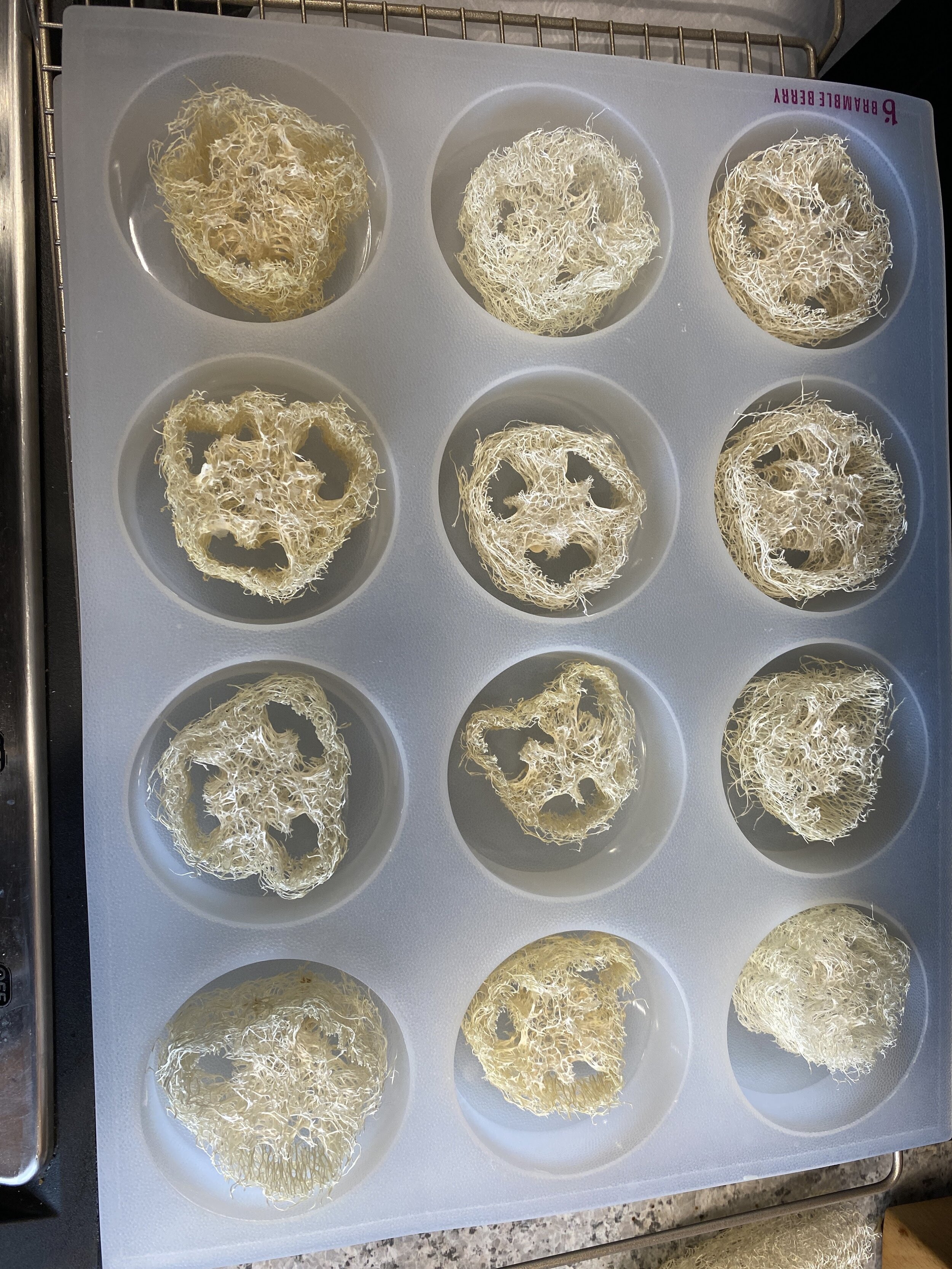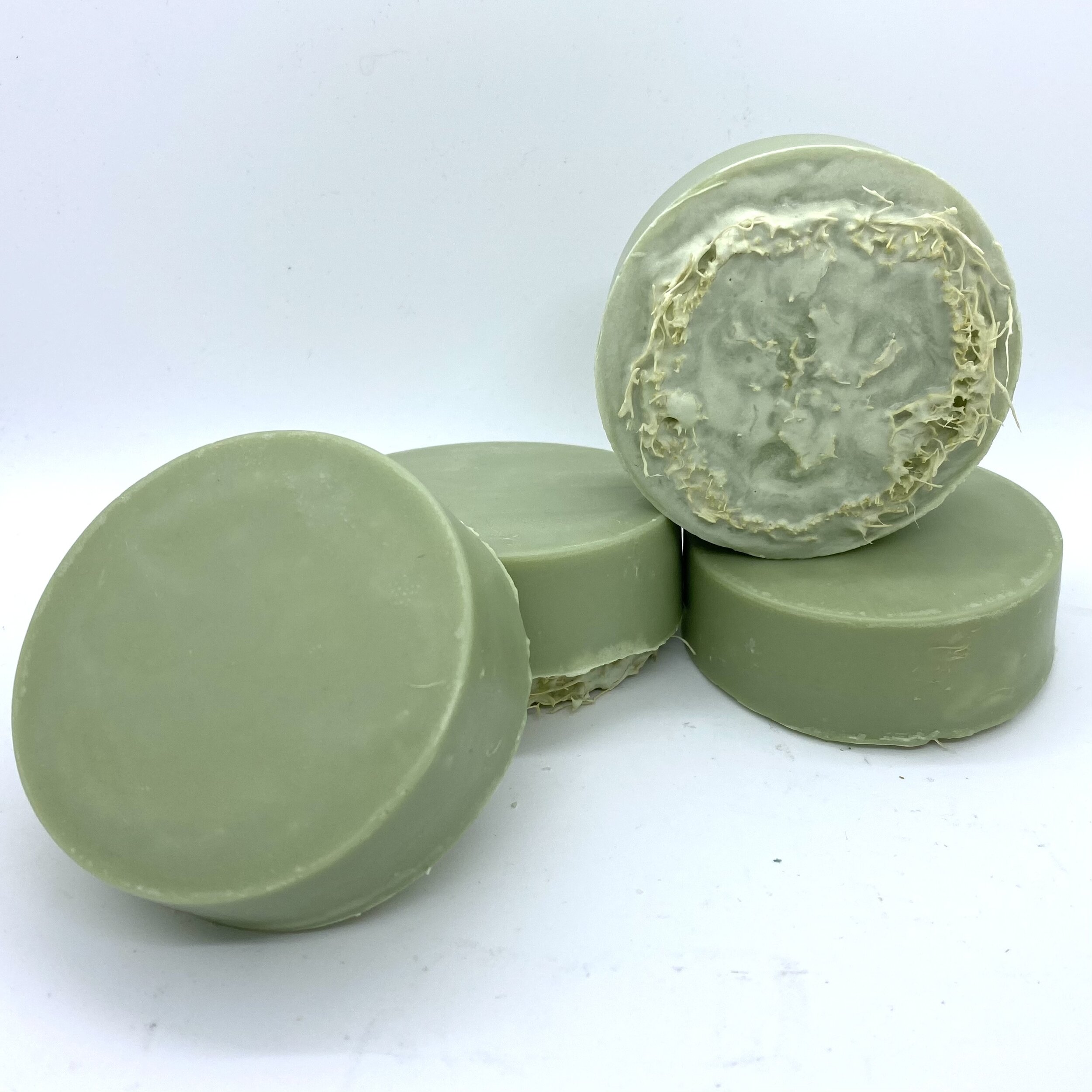Adventures in Gardening — Loofahs!
Last year my husband bought some seeds for our vegetable garden, and with them came a sample of six loofah seeds (also spelled luffa). We had not originally planned on growing loofahs, but figured “why not?” As we grew them, the most common comment we kept getting was, “loofahs are a plant? I always thought they were from the ocean!” Loofahs are actually a squash. Although typically grown to maturity (left) for their fiborus flesh for sponges, loofahs are also edible when immature (right). I am told you treat them like a zucchini, but we did not try them (yet).
Loofah plants are typically grown in warmer climates (zone 7+) because they have a very long growing season (90-100 days). But, I started them inside early (this year even earlier — mid-March). Loofah plants grow as climbing vines and can reach up to 30’ long! Since we are in zone 6 here, they did not have the opportunity to quite reach that size. The plants produce a lot of very pretty yellow flowers, which were favorites of our local bees. There are two types of flowers that come out of one plant, a male (right picture, and at the bottom of the left) and a female (left).
The ideal time to harvest a mature loofah is when you can see it is starting to dry on the vine. You can feel the loofahs get lighter and they turn more of a shade of yellow (compare left to middle). I was warned that if left too long, they can rot on the vine. However, I think our growing season here is too short for that to happen, the frost came first (right)! The loofahs were fine after this frost, but the plant did not survive and we harvested all the loofahs that were still on the vines.
Once a loofah is picked, they need to be shucked and cleaned out of the inner pulp to leave just the fibrous frame we are familiar with as sponges. If the loofah has dried out, this is a fairly easy process. On a dried loofah the skin peels readily from the fiber and the seeds come free; and you can even hear them rattle inside if you shake it. There is very little pulp to clean out, and the seeds look like black pumpkin seeds. However, on a more green loofah the skin is not so willing to part with the fiborous skeleton, and on even younger ones the fiborus skeleton is still mostly pulp. Additionally, the immature seeds fail to come free and look just like pumpkin seeds. Once cleaned (right), the loofahs need to be dried completely to prevent any mold. Once completely dry, loofahs can be stored for years if kept in a dry location where they won’t collect dust.
Finally, I get to use my loofahs for soap! I took several loofahs and cut them into approximately 1-1.5 inch slices. These I placed individually into cavity molds and poured soap around the slice. I let these set till they were hard, removed them from their molds, and let the soap cure for 4 weeks before use — loofah soaps!


